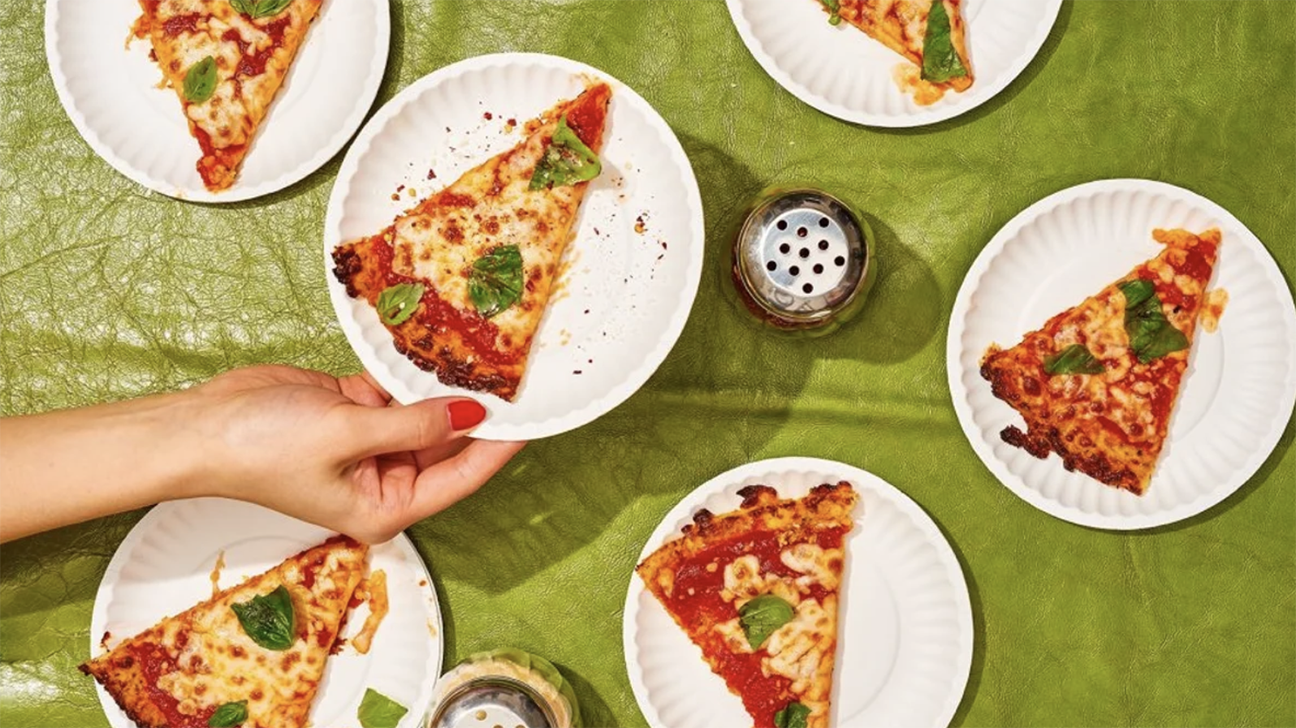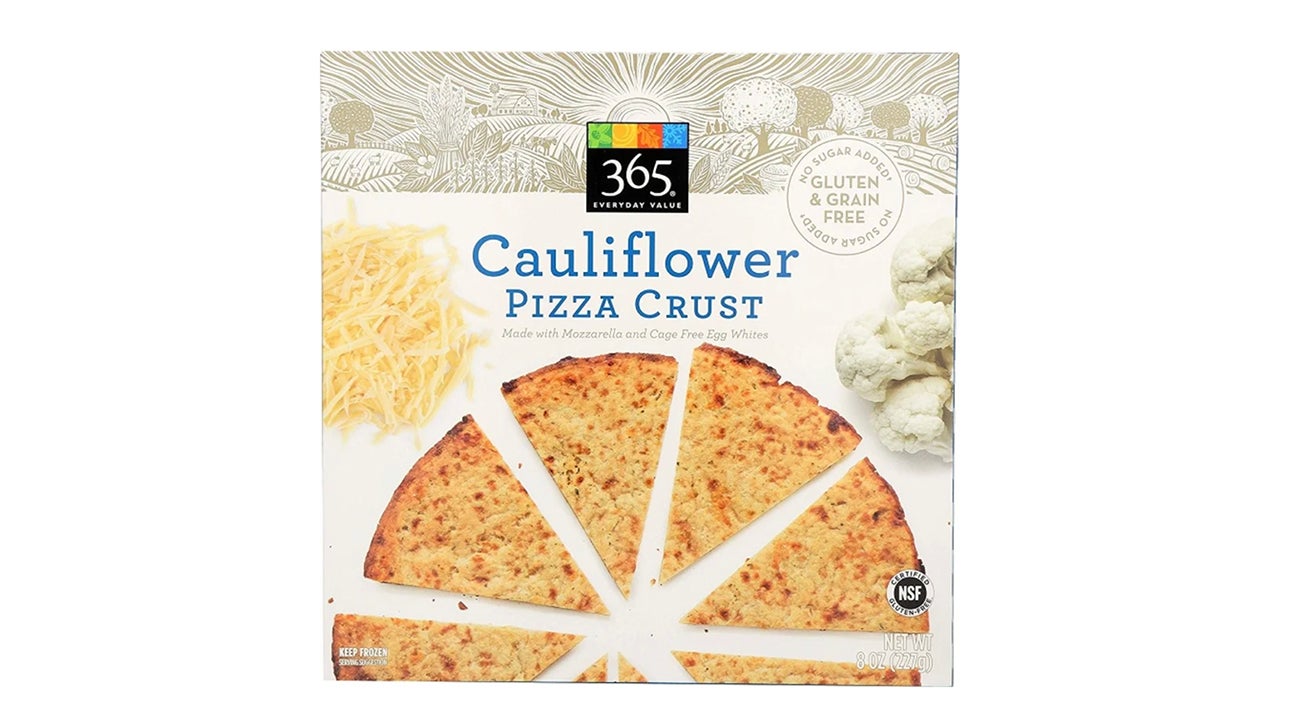Cauliflower pizza crust is nothing new, but it’s still popular (and divisive). Here’s a review of Whole Foods’ cauliflower pizza crust—and an option for making your own cauli crust at home.

I’m of the philosophy that pizza is built on a foundation of soft, doughy goodness. Crusts should be thick-bodied and full of dips and curves. A good crust has give when you bite into it. An even better crust has a little bit of elasticity and, you know, gluten. Which is why I was somewhat skeptical of the proliferation of cauliflower pizza crusts flooding the frozen food aisles of grocery stores recently. Not only is Oprah a fan, but keto, low-carb, and gluten-free acolytes are jumping on the cauliflower pizza crust bandwagon too as this new beatnick base has a host of health benefits.
Yes, cauliflower is and has been for some time, “having a moment.” In 2018, sales of products that had cauliflower in them grew 71 percent in dollars according to Nielsen data. Roasting a whole head and making it your dinner party showpiece became a thing after Yotam Ottolenghi made it a thing. And because the cruciferous vegetable is not only aligned with the plant-based eating craze but is also naturally low-carb and nutrient-dense, it makes sense food startups like Outer Aisle Gourmet and big brands like Green Giant and Cali’flour Foods found other ways to use it. (Right now, Chipotle is testing cauliflower rice in some locations, so perhaps one day we’ll get a cauliflower crust option at Pizza Hut?)
Is Cauliflower Crust Actually Healthy?
But is cauliflower crust good for you? Depends on what you mean by healthier. Compared to a whole wheat alternative, they almost level out at calories, sodium content, and protein. In terms of carbs, you’re still higher with a whole wheat crust (that’ll ring you in around 21 grams versus cauliflower’s 14 grams). But what cauliflower touts is, well, cauliflower, which is high in fiber, choline, and antioxidants. If you consider that your average slice of non-whole-wheat pizza rings in at a whopping near-300 calories, you’ll be on top with a slice of cauliflower crust (about half of that calorie count). And, with a high nutrient density, it’s hard to deny that you’ll clock more healthy points than a pile of soft, doughy, cheesy goodness.
How Does It Taste?
Though I have strong opinions about pizza and its crust content, I also love eating pizza, maybe too much, and realized perhaps this was a way to have it more often without feeling guilty about it. So I relented and took that first step—er, bite—into experimental pizza crust. Whole Foods is my jam, so I thought I would give its own brand of 365 Cauliflower Pizza Crust a try. It’s gluten-free, has half the sugar of traditional crusts, and is packed with vitamin C. My pizza oven (which is just a regular, New York city apartment oven) was ready to be fired up.

So when I pulled this pie crust out of its packaging, I was surprised to find it softer than I had expected, something I took to be a good sign. I had this idea of cauliflower crusts having the crunchiness of hardtack. The instructions were simple: remove from packaging, bake for 6-8 minutes, voila. So I lightly lathered its surface with tomato sauce, and proceeded to top it with a proportionate amount of mozzarella, a sprinkle of parmesan, and some basil, and let it do its thing.
I tossed the ‘za in at 425 degrees for a good 6-8 minutes then pulled it out. Slice by slice, I was in awe of its pliancy. In one bite, then two, then six, cauliflower pizza crust gained one serious new fan.
What you’ll sacrifice: soft and doughy elasticity and those unparalleled pockets of tomato sauce. What you’ll gain: a still soft, albeit more textured crust with the added benefit of enjoying an actual pizza without hating yourself as you stare at an empty Dominos box.
And the taste? Not game changing, and certainly not the real deal, but not bad either. Cauliflower pizza crust tasted like a simplified version of true dough. Does it taste like bread? Hell no. It’s subtly grainy with a bread-like appeal though. It is distinctly veggie-based, but not completely bland. Plus, cheese and sauce on top of anything is generally going to taste pretty damn good.

0 Commentaires